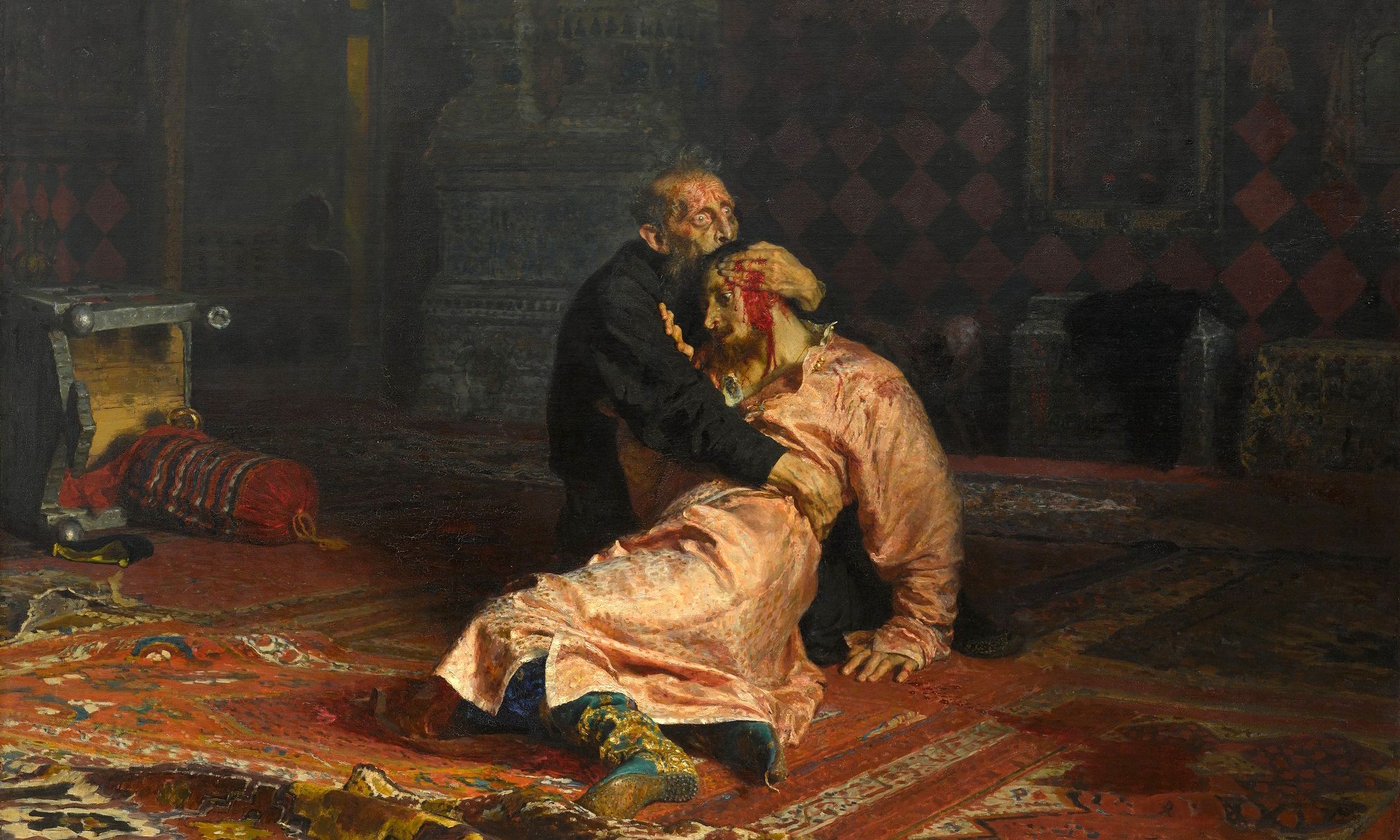Ilya Repin’s 1885 masterpiece, Ivan the Terrible and His Son Ivan.
After four years of painstaking and pioneering restoration, Ilya Repin’s 1885 masterpiece Ivan the Terrible and His Son Ivan was briefly rehung in Moscow’s State Tretyakov Gallery on 23 May. The painting was attacked by an “overwhelmed” drunk man wielding a metal pole in 2018.
The work suffered three tears to its surface. The assailant, Igor Podporin from Voronezh (460km from Moscow), was sentenced to two and a half years in prison.
The repaired canvas measuring 199.5cm by 254cm was unveiled to the press in the Tretyakov’s Ilya Repin Hall before being wheeled back into the gallery’s vaults at the end of the ceremony. It will not return to public view until a specially designed “protective capsule” is built to cover it.
The work has been attacked twice in the past; it was first targeted in 1913 by a mentally ill iconographer, who slashed it three times with a knife (Repin was on hand to help restore it himself). The Tretyakov hopes increased security will deter anyone from committing a third act of violence during a fit of rage, like that immortalised in the painting, which portrays Ivan the Terrible cradling his bloodied son, Tsarevich Ivan, after dealing him a mortal blow in 1581.
The museum set up a “special restoration workshop” on-site, said to include a "unique restoration chair.” The Russian state-owned banking and financial services company Sberbank helped fund the project, which is estimated to have cost $160,000.
“During the restoration process, for the first time in Russia, an innovative approach to thinning the lacquer coating was used. Together with the excess lacquer, now thinned down to its original layer, a considerable amount of old restoration inter-lacquer notes and materials was also removed. This allowed the painting to regain its true colouristic sound as conceived by the artist,” a Tretyakov spokesperson added.
The general director of the Tretyakov Gallery Zelfira Tregulova told reporters that she hopes to raise enough money “in the near future” to build the protective capsule, which will be made out of the same anti-glare, anti-vandal bulletproof glass that shields Sandro Botticelli's The Birth of Venus and Primavera in Florence's Uffizi Gallery. The glass is only made in Italy and Japan, which Tregulova suggested is an obstacle due to the current sanctions imposed on Russia following the ongoing war in Ukraine.
She also said metal security poles like the one used to damage the painting in 2018 have been removed from the gallery: “As you can see during this press conference, we have strengthened security. There is a Federal Guard Service officer and a Tretyakov Gallery guard present.” In spite of the security measures, Tregulova added that she does not want to give visitors the impression that the artwork is in a “dungeon” when it permanently returns.
Tatiana Gorodkova, the Tretyakov’s chief curator, said the attack does have a silver lining because more is now known about Repin’s famous work: “Now the painting is in a very good state of preservation. It is alive, the canvas has regained its plasticity, details that we had not seen before have emerged. The incredible, fantastic richness of this painting has emerged.”

